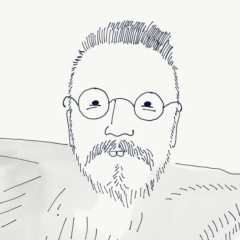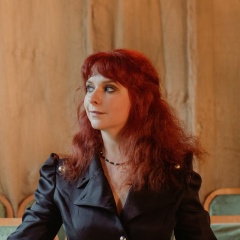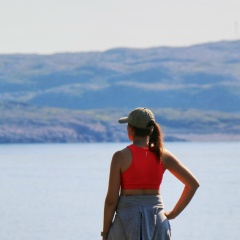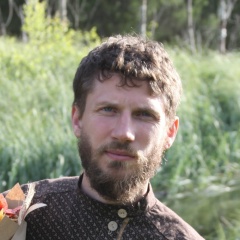День второй начался неожиданно. После увиденных накануне пятисот оттенков серого я уже настроился, что примерно в таком же ключе пройдет большая часть поездки. Отодвинул штору и забился обратно под одеяло, шипя и дымясь от яркого солнца на стремительно голубеющем небе. Несколько опешив, привели себя в человеческий вид, совершили набег на местный завтрак и отправились забирать машину. Надо сказать, что викинг-хозяин, нимало не смутившись, отвалил куда-то в другую область снимать кино, а машину выдавал его брат, вышедший с дитем на руках и совершенно расслабленный. Даже расписываться в документах ему не особо казалось нужным. Зато от него был получен краткий ликбез о местных дорогах: следите за ветром, бойтесь отмороженных овец, а о плохих трассах вас, русских, предупреждать смысла нет. И вот так состав отряда пополнился убитой "гранд-витарой", которая явно видала всякое, вплоть до падений на крышу. Мы закинули сумки в багажник и стартовали на поиски Великой Исландской Мечты.
Исландские дороги своеобразны. С учетом творящегося здесь погодного трэша, они весьма пристойны, однако регулярно имеют колейность и хаотичные уклоны, что особенно бесит в сочетании с общей их узостью и недружелюбностью каменных кюветов. Шоссейный лимит 90, но лично я его выбирал далеко не везде, ибо многие повороты несколько нервны, да еще и надо помнить об отмороженных овцах. Нет, оказалось, что викинг имел в виду не собратьев по дороге а настоящих овец, которые в больших количествах пасутся на обочинах. Помимо них, попадается чуть меньше коров и огромное количество лошадей. Все ухоженные и исключительно пасторальные. Судя по всему, скотоводство здесь в большом почете, равно как и сельское хозяйство. Мы сейчас движемся по юго-западу, где горы не такие мертвые, а между ними много места под поля. Сельхозтехники местами чуть ли не больше, чем машин. Трактора, комбайны и неведомые устройства, наводящие на мысли об испанской инквизиции. Почти везде в поле зрения есть населенные точки, но их обычно не назвать даже деревнями - фермы на 3-5 домов, которые, видимо, обслуживают окрестные поля и пастбища. Деревень мало, их видно издалека по аскетичным лютеранским церквушкам - белым или бело-красным. Для лучшего понимания - все население Исландии меньше, чем во Фрунзенском районе Питера, а две трети из него сосредоточено в столице. Можете сами прикинуть, какая выходит плотность.
Исландские дороги своеобразны. С учетом творящегося здесь погодного трэша, они весьма пристойны, однако регулярно имеют колейность и хаотичные уклоны, что особенно бесит в сочетании с общей их узостью и недружелюбностью каменных кюветов. Шоссейный лимит 90, но лично я его выбирал далеко не везде, ибо многие повороты несколько нервны, да еще и надо помнить об отмороженных овцах. Нет, оказалось, что викинг имел в виду не собратьев по дороге а настоящих овец, которые в больших количествах пасутся на обочинах. Помимо них, попадается чуть меньше коров и огромное количество лошадей. Все ухоженные и исключительно пасторальные. Судя по всему, скотоводство здесь в большом почете, равно как и сельское хозяйство. Мы сейчас движемся по юго-западу, где горы не такие мертвые, а между ними много места под поля. Сельхозтехники местами чуть ли не больше, чем машин. Трактора, комбайны и неведомые устройства, наводящие на мысли об испанской инквизиции. Почти везде в поле зрения есть населенные точки, но их обычно не назвать даже деревнями - фермы на 3-5 домов, которые, видимо, обслуживают окрестные поля и пастбища. Деревень мало, их видно издалека по аскетичным лютеранским церквушкам - белым или бело-красным. Для лучшего понимания - все население Исландии меньше, чем во Фрунзенском районе Питера, а две трети из него сосредоточено в столице. Можете сами прикинуть, какая выходит плотность.
Day two began unexpectedly. After seeing five hundred shades of gray on the eve, I was already in the mood that most of the trip would pass in approximately the same way. He removed the curtain and huddled back under the blanket, hissing and smoking from the bright sun in the rapidly blue sky. Somewhat taken aback, they brought themselves to human form, raided the local breakfast and set off to pick up the car. I must say that the Viking host, not embarrassed in the slightest, rolled off the cinema somewhere in another area, and his brother, released with a child in his arms and completely relaxed, gave the car. Even to sign documents was not particularly necessary for him. But from him a brief educational program was received about local roads: watch the wind, be afraid of frostbitten sheep, and there are no warnings about bad routes from you, Russians. And so the squad was replenished with a slain "Grand-Vitara," who clearly saw everything, right down to the falls on the roof. We put our bags in the trunk and started searching for the Great Icelandic Dream.
Icelandic roads are peculiar. Taking into account the weather trash happening here, they are very decent, however, they regularly have rutting and chaotic biases, which is especially annoying in combination with their general narrowness and unfriendly stone ditches. The highway limit is 90, but personally I didn’t choose it far from everywhere, because many turns are somewhat nervous, and you also have to remember about frostbitten sheep. No, it turned out that the Viking had in mind not the fellows on the road, but real sheep, who graze in large quantities on the verges. In addition to them, there are slightly fewer cows and a huge number of horses. All well maintained and exclusively pastoral. Apparently, cattle breeding is held in high esteem, as well as agriculture. We are now moving along the south-west, where the mountains are not so dead, and between them there is a lot of space under the fields. Agricultural machinery places almost more than machines. Tractors, combines and unknown devices, suggestive of the Spanish Inquisition. Almost everywhere in the field of view there are inhabited points, but they are usually not even called villages - farms for 3-5 houses, which apparently serve the surrounding fields and pastures. There are few villages, they can be seen from afar through austere Lutheran churches - white or white and red. For a better understanding, the entire population of Iceland is smaller than in the Frunze district of St. Petersburg, and two thirds of it is concentrated in the capital. You can figure out for yourself what density comes out.
Icelandic roads are peculiar. Taking into account the weather trash happening here, they are very decent, however, they regularly have rutting and chaotic biases, which is especially annoying in combination with their general narrowness and unfriendly stone ditches. The highway limit is 90, but personally I didn’t choose it far from everywhere, because many turns are somewhat nervous, and you also have to remember about frostbitten sheep. No, it turned out that the Viking had in mind not the fellows on the road, but real sheep, who graze in large quantities on the verges. In addition to them, there are slightly fewer cows and a huge number of horses. All well maintained and exclusively pastoral. Apparently, cattle breeding is held in high esteem, as well as agriculture. We are now moving along the south-west, where the mountains are not so dead, and between them there is a lot of space under the fields. Agricultural machinery places almost more than machines. Tractors, combines and unknown devices, suggestive of the Spanish Inquisition. Almost everywhere in the field of view there are inhabited points, but they are usually not even called villages - farms for 3-5 houses, which apparently serve the surrounding fields and pastures. There are few villages, they can be seen from afar through austere Lutheran churches - white or white and red. For a better understanding, the entire population of Iceland is smaller than in the Frunze district of St. Petersburg, and two thirds of it is concentrated in the capital. You can figure out for yourself what density comes out.
У записи 7 лайков,
0 репостов.
0 репостов.
Эту запись оставил(а) на своей стене Всеволод Клингенберг






![Лилия Крутова [Хирург] Лилия Крутова [Хирург]](https://pp.userapi.com/c638417/v638417656/29a22/Kxf_ZR_bl6w.jpg)





















